DS Automobiles DS 4 vs Renault Symbioz - Differences and prices compared
Costs and Efficiency:
Looking at overall running costs, both models reveal some interesting differences in everyday economy.
Renault Symbioz has a clearly perceptible advantage in terms of price – it starts at 24400 £, while the DS Automobiles DS 4 costs 34000 £. That’s a price difference of around 9549 £.
Fuel consumption also shows a difference: Renault Symbioz manages with 4.50 L and is therefore a bit more efficient than the DS Automobiles DS 4 with 5.20 L. The difference is about 0.70 L per 100 km.
Engine and Performance:
Power, torque and acceleration say a lot about how a car feels on the road. This is where you see which model delivers more driving dynamics.
When it comes to engine power, the Renault Symbioz has a to a small extent edge – offering 158 HP compared to 130 HP. That’s roughly 28 HP more horsepower.
In acceleration from 0 to 100 km/h, the Renault Symbioz is a bit quicker – completing the sprint in 9.10 s, while the DS Automobiles DS 4 takes 10.90 s. That’s about 1.80 s faster.
In terms of top speed, the DS Automobiles DS 4 performs somewhat better – reaching 203 km/h, while the Renault Symbioz tops out at 180 km/h. The difference is around 23 km/h.
There’s also a difference in torque: DS Automobiles DS 4 pulls slightly stronger with 300 Nm compared to 265 Nm. That’s about 35 Nm difference.
Space and Everyday Use:
Whether family car or daily driver – which one offers more room, flexibility and comfort?
Seats: offers more seating capacity – vs .
In curb weight, Renault Symbioz is a bit lighter – 1359 kg compared to 1558 kg. The difference is around 199 kg.
In terms of boot space, the Renault Symbioz offers noticeable more room – 576 L compared to 430 L. That’s a difference of about 146 L.
In maximum load capacity, the Renault Symbioz performs noticeable better – up to 1682 L, which is about 442 L more than the DS Automobiles DS 4.
When it comes to payload, Renault Symbioz barely noticeable takes the win – 459 kg compared to 442 kg. That’s a difference of about 17 kg.
Who wins the race?
The Renault Symbioz proves to be wins the duel decisively and therefore becomes our DriveDuel Champion!
Renault Symbioz is the better all-rounder in this comparison.
 @ Renault Group Media
@ Renault Group Media
Renault Symbioz
Costs and Consumption
View detailed analysis
Engine and Performance
View detailed analysis
Dimensions and Body
View detailed analysis
DS Automobiles DS 4
The DS 4 is a striking compact that wears couture-inspired styling like a tailored suit, and its cabin feels more boutique hotel than ordinary hatchback with premium materials and clever detailing. On the road it mixes poise with comfort, rewarding drivers who want a refined, characterful alternative to the usual suspects — and enjoy the odd admiring glance at the lights.
details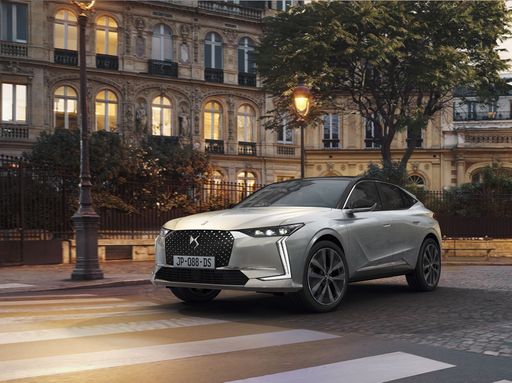 @ DS Automobiles / Stellantis Media
@ DS Automobiles / Stellantis Media
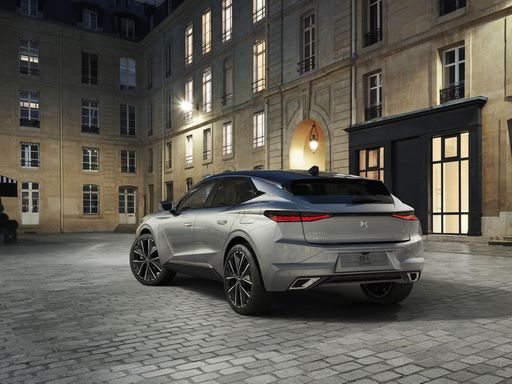 @ DS Automobiles / Stellantis Media
@ DS Automobiles / Stellantis Media
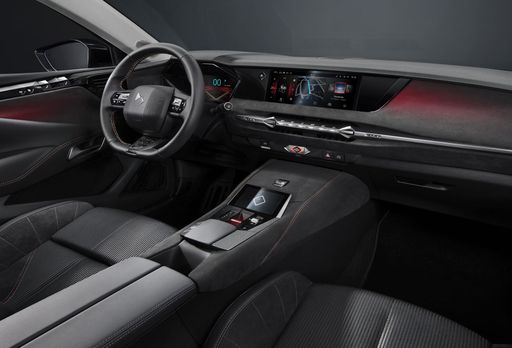 @ DS Automobiles / Stellantis Media
@ DS Automobiles / Stellantis Media
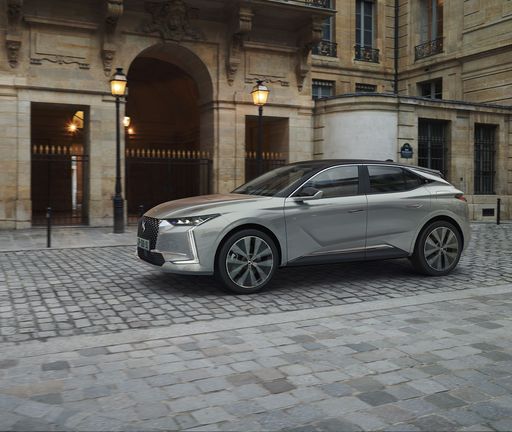 @ DS Automobiles / Stellantis Media
@ DS Automobiles / Stellantis Media
Renault Symbioz
The Renault Symbioz feels less like a traditional car and more like a rolling living room that's been told it's allowed to drive — its flowing lines and minimalist cabin are pure concept-car theatre that teases the future of everyday transport. For buyers with an eye for design and a taste for tech-forward ideas, the Symbioz is an alluring vision of what Renault could offer tomorrow, even if it's not yet a model you can park in your driveway.
details @ Renault Group Media
@ Renault Group Media
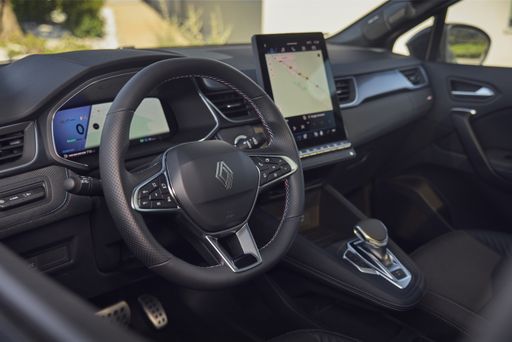 @ Renault Group Media
@ Renault Group Media
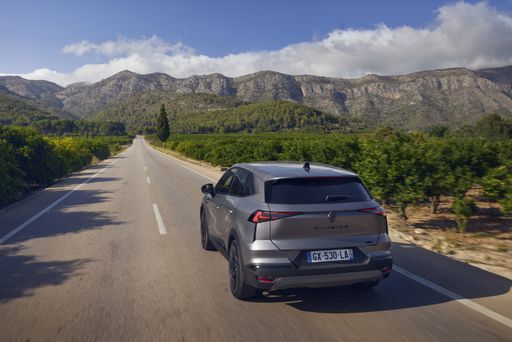 @ Renault Group Media
@ Renault Group Media
 @ DS Automobiles / Stellantis Media
@ DS Automobiles / Stellantis Media
|
 @ Renault Group Media
@ Renault Group Media
|
|
|
|
Costs and Consumption |
|
|---|---|
|
Price
34000 - 41700 £
|
Price
24400 - 30700 £
|
|
Consumption L/100km
5.20 L
|
Consumption L/100km
4.5 - 6 L
|
|
Consumption kWh/100km
-
|
Consumption kWh/100km
-
|
|
Electric Range
-
|
Electric Range
-
|
|
Battery Capacity
-
|
Battery Capacity
-
|
|
co2
137 g/km
|
co2
102 - 136 g/km
|
|
Fuel tank capacity
53 L
|
Fuel tank capacity
48 L
|
Dimensions and Body |
|
|---|---|
|
Body Type
Hatchback
|
Body Type
SUV
|
|
Seats
5
|
Seats
5
|
|
Doors
5
|
Doors
5
|
|
Curb weight
1558 kg
|
Curb weight
1359 - 1544 kg
|
|
Trunk capacity
430 L
|
Trunk capacity
492 - 576 L
|
|
Length
4400 mm
|
Length
4413 mm
|
|
Width
1830 mm
|
Width
1797 mm
|
|
Height
1470 mm
|
Height
1575 mm
|
|
Max trunk capacity
1240 L
|
Max trunk capacity
1582 - 1682 L
|
|
Payload
442 kg
|
Payload
376 - 459 kg
|
Engine and Performance |
|
|---|---|
|
Engine Type
Diesel
|
Engine Type
Full Hybrid, Petrol MHEV
|
|
Transmission
Automatic
|
Transmission
Automatic, Manuel
|
|
Transmission Detail
Automatic Gearbox
|
Transmission Detail
Automatic Gearbox, Manual Gearbox, Dual-Clutch Automatic
|
|
Drive Type
Front-Wheel Drive
|
Drive Type
Front-Wheel Drive
|
|
Power HP
130 HP
|
Power HP
140 - 158 HP
|
|
Acceleration 0-100km/h
10.90 s
|
Acceleration 0-100km/h
9.1 - 11 s
|
|
Max Speed
203 km/h
|
Max Speed
180 km/h
|
|
Torque
300 Nm
|
Torque
250 - 265 Nm
|
|
Number of Cylinders
4
|
Number of Cylinders
4
|
|
Power kW
96 kW
|
Power kW
103 - 116 kW
|
|
Engine capacity
1499 cm3
|
Engine capacity
1332 - 1789 cm3
|
General |
|
|---|---|
|
Model Year
2024 - 2025
|
Model Year
2025
|
|
CO2 Efficiency Class
E
|
CO2 Efficiency Class
C, D, E
|
|
Brand
DS Automobiles
|
Brand
Renault
|
Is the DS Automobiles DS 4 offered with different drivetrains?
Available configurations include Front-Wheel Drive.
The prices and data displayed are estimates based on German list prices and may vary by country. This information is not legally binding.
